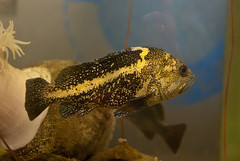
OSU grad student Emily Mazur will be working with NOAA on conveying important info to scientists. (Photo by George Mazur)
September 13, 2018
By Rick Cooper
Oregon Sea Grant has awarded $54,000 to two graduate students at Oregon State University and a Portland State University alumna to assist them with their research and environmental management work.
OSU graduate students Emily Mazur and Erin Peck are recipients of the 2018-19 Robert E. Malouf Marine Studies Scholarships, and PSU graduate Bryn Hudson has been awarded a 2018-19 Natural Resource Policy Fellowship.
Mazur completed a bachelor’s degree in marine science and biology at the University of Miami, where she also minored in marine policy. She is working toward a master’s degree in marine resource management at OSU. She will be working with the National Oceanic and Atmospheric Administration to better understand how agencies can convey important weather, ocean and climate information to Oregon scientists.

OSU doctoral candidate Erin Peck is studying environmental and human factors affecting Oregon’s salt marshes. (Photo by Kristina Montville)
Peck earned her bachelor’s degree in environmental science from Franklin & Marshall College in Lancaster, Pennsylvania, and her master’s from OSU’s College of Earth, Ocean, and Atmospheric Sciences, where she is working toward a doctorate in ocean ecology and biochemistry. Her research aims to identify the main factors affecting sediment accumulation and carbon burial in Oregon’s salt marshes and to determine the marshes’ resilience to sea-level rise and human-caused land-use changes.
Hudson holds a bachelor’s degree in aquatic biology with a minor in educational studies from the University of California, Santa Barbara, and a master’s degree in environmental science and management from Portland State University. She will work with the Governor’s Natural Resource Office, helping to implement and advance the governor’s natural resource and environmental agenda. In addition, she will assist state departments in managing issues and advancing their budget requests and legislative proposals. The position also involves providing critical support on coastal issues such as water quality, ocean acidification and hypoxia, sea-level rise, marine renewable energy, planning for rocky shores, invasive species and marine fisheries.

PSU grad Bryn Hudson will work with the Governor’s Natural Resource Office on a variety of tasks and issues.
The Malouf Scholarship is awarded to graduate students who combine societally relevant research with education or public engagement. The students may be enrolled at any college or university in Oregon while working toward a degree in any field compatible with Oregon Sea Grant’s strategic plan. The yearlong scholarship is named for Robert E. Malouf, who was the director of Oregon Sea Grant from 1991 until his retirement in 2008. The 2018-19 award is $10,800. The scholarship begins October 1, 2018, and ends September 30, 2019.
The Natural Resource Policy Fellowship, also a year in length, is intended to give a graduate student first-hand, full-time experience in natural resource policy at the state level. In so doing, the student contributes to policies that benefit natural-resource managers, coastal community members, and user groups such as fishermen. The fellowship pays $32,400 for the year, which also begins October 1, 2018, and ends September 30, 2019.
The fellowship and scholarships are all funded and administered by Oregon Sea Grant.





